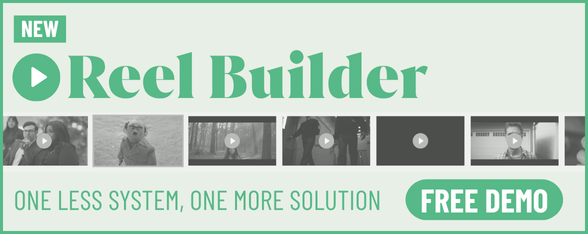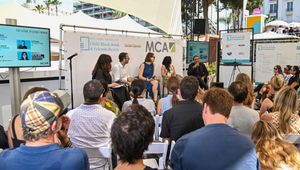
‘Cultural Power’ Guides M+C Saatchi into the Future

The world’s largest independent creative network, M+C Saatchi, is today looking to the future. For over 30 years, it has operated under the guiding ‘Brutal Simplicity of Thought’ principle. The network isn’t leaving it behind, but it is building on it with a new strategic proposition: 'Cultural Power'. The two are going to coexist harmoniously.
When we ask why the pivot, Zaid Al-Qassab, global chief executive officer, says the simple answer is that “Brutal Simplicity of Thought describes how we do things while 'Cultural Power' is what we do for clients.”
Then there’s the contextual explanation. “Cultural power is crucial. For 30 years, I was a client and a former CMO so I understand the media landscape's fragmentation and the rise of personalisation, where different people receive different messages. Social media has fostered diverse communities with distinct interests, rendering traditional marketing models obsolete. Successful marketing today hinges on understanding these communities and communicating in a way that resonates with them. While simplicity remains valuable, it must align with what is culturally relevant to the audiences that matter to your brand,” says Zaid.
Zaid joined M+C Saatchi in the global CEO role 10 months ago. He soon knew that Brutal Simplicity of Thought wasn’t enough for the network and its clients and began working on the repositioning soon after. Zaid says that this has been in the works for close to a year and in his first few months he met and spoke with about 50 chief marketing officers to gain deeper insights about what they need and what they think is going wrong with how marketing services are done today.
“The other side of the equation was looking inward. What is M+C Saatchi truly great at? What are we known for?,” he adds.
Zaid sees the network’s strength located in “behaviour-changing work, like our impactful campaigns for the NHS. Our sports and entertainment division specialises in activating communities, helping brands like Heineken make their Champions League sponsorships meaningful. And with brands like LEGO, which has evolved from a toy into a cultural icon, we create collaborations that resonate, such as our work with Pharrell Williams.”
Applying a modern approach
What does Zaid make of the idea that ‘advertising is dying’? “It’s a myth,” in his eyes, but what is on its way out is the traditional way advertising got used to operating. “Connecting with people today requires a modern approach; traditional marketing no longer suffices. The way it works has evolved significantly. Gone are the days of simply pushing ads about your brand. Now, it’s about showing how your brand fits into people’s lives, lives increasingly shaped by online communities, primarily accessed through mobile. It’s a completely different way of thinking about advertising,” he states.
As well as clarifying what and how M+C Saatchi will do for clients, 'Cultural Power' is already reshaping the network from the inside like making significant organisational changes to operate as one team in each region, bringing together various specialisms. “To build cultural power, you must understand a brand’s unique challenges and the areas where it needs support. That means assembling the right specialists for each situation rather than assuming every brief is simply for a 30-second TV ad. Instead, we start by identifying the business challenge and the communities that matter.”
Necessarily, this shift has also changed the skills M+C Saatchi seeks. “We’re now recruiting talent from social-first backgrounds, people who understand communities and influencers. Our creatives are omnichannel, often with a digital and social focus – just in the last two months, we’ve hired 10 new creatives in Australia alone.” Likewise, bringing in Rob Doubal and Laurence 'Lolly' Thomson as chief creative officers was a deliberate choice, according to Zaid, as they work in a channel-agnostic way, focusing on ideas that spark engagement within the right communities.
Questioning is a big part of applying the 'Cultural Power' ethos. Questions like: “How does a brand tap into cultural moments, and who are the right people to make that happen? It might involve live activations, influencer-driven outreach, or even a full brand repositioning to stay relevant to key communities. In the past, these would have been separate disciplines. Now, they’re all part of one team. We start with the client’s needs and build the right team to deliver,” Zaid adds.
Some brands already get what it means to wield cultural power, Zaid observes, like Red Bull. It’s an example he reaches for frequently since the brand has been doing it for decades now. “Red Bull understood early on that success wasn’t about how much you spent on broadcast advertising – it was about how well you connected with communities and how clearly your brand’s point of view resonated. When people understand what a brand stands for and feel a strong affinity to it, that connection drives growth, whether in sports communities or more niche spaces.”
But most brands are still on this journey or haven’t fully accepted that this is what’s needed to succeed in the marketplace. Zaid says that many CMOs he’s spoken to recognise the need to adapt but find the shift daunting since “it requires relinquishing some control and listening to communities rather than dictating to them.”
“You have to identify what your brand is going to stand for first,” Zaid states. “The process starts with understanding your end users. What interests them and what cultural forces shape their world. But it’s not just about identifying these factors; brands must stay committed to them, appealing to relevant communities rather than forcing connections where none exist. It has to feel natural, authentic, and tailored.”
A culture-shifting strategy
A key part of M+S Saatchi’s 'Cultural Power' approach is the Cultural Power Index, a diagnostic tool designed to help brands assess their strengths, identify opportunities, and address gaps. It can help to locate if brands’ challenges are in how they engage, in their core proposition, or in their presence across different platforms. For Zaid, modern marketing must demand answers to crucial questions: “What does your brand stand for? Where and how do you engage with people? Which communities matter? How often do you adapt? And how much control are you willing to relinquish for others to speak on your behalf? Today’s brand leaders must navigate these challenges with clarity and discipline.”
What does investment in culture actually mean today? It’s not jumping on every trend, ‘-core’, and meme that’s born as fast as it dies in the relentless online churn. “Those things have their place; if a trend aligns with your brand, by all means, use it. But that’s not how you build lasting cultural power,” reasons Zaid. “Winning isn’t about reacting to fleeting moments; it’s about recognising the deeper, long-term themes – connections to sport, film, music, or broader social shifts. While short-term trends can inspire creative executions, true cultural power comes from aligning with what truly defines a brand.”
M+C Saatchi’s recent work for the UK's Department of Energy and Net Zero are an example where it was about so much more than messaging: “It was about driving real behavioural change, from lowering fuel costs to promoting sustainability and encouraging people to adopt heat pumps. These are significant decisions with lasting impact, and that’s the kind of work that truly shifts culture. When we worked on repositioning Iceland as a tourist destination during and after covid, it wasn’t about jumping on a fleeting trend. It was about understanding deep, long-term cultural shifts like people’s growing desire for the great outdoors, their focus on mental well-being, and how these factors shape behaviour,” he adds.
In essence, “these weren’t just momentary trends or quick gimmicks; they reflected fundamental changes in what people value. That’s the difference between cultural power and simply chasing what’s trending today,” Zaid explains.
Creativity – big, creative ideas – are at the heart of this and always will be. It’s what every brand needs and will continue to need. “Big ideas are still the key driver and the most crucial element to get right. But the challenge today isn’t just having great ideas; it’s knowing where they should live, which communities they should connect with, and how to bring them to life in an increasingly complex media landscape,” he adds. “That’s the hard part. And that’s what we’re building on: adding this strategic depth to our 30-year legacy of creating famous, powerful ideas.”
A growth engine for the future
The plan, already in motion, is to use ‘Cultural Power’ as a growth engine for the network and for its clients. For clients, 'Cultural Power' means “positioning your brand in a modern, digital, multi-channel world, one that relies far more on pull than push. That’s the real shift.”
As for the network, it’s “about returning to what has always made M+C Saatchi a renowned agency: our ability to identify major cultural themes, societal shifts, and behavioural changes that drive business growth. We’ve always been strong in this area, but it needed reframing for the modern world. Today, it’s no longer just about telling people who you are: it’s about genuinely connecting with them.”















